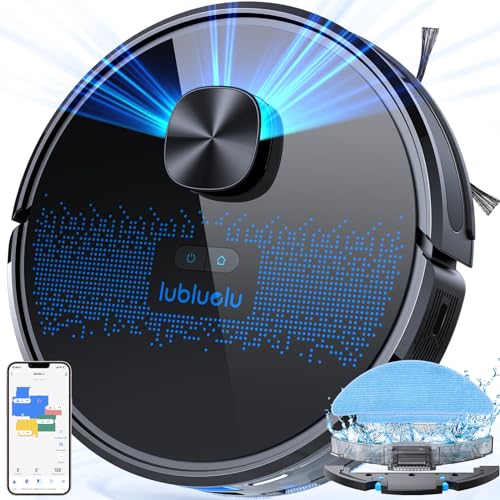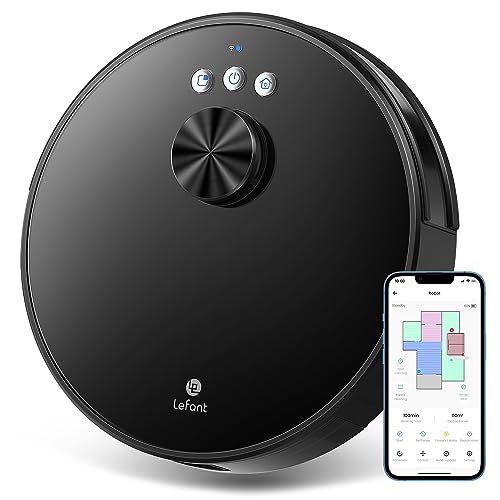The 10 Most Terrifying Things About Robot Vacuum With Lidar
페이지 정보
작성자Elwood 댓글댓글 0건 조회조회 23회 작성일 24-09-03 09:19본문
 Robot Vacuum With Lidar
Robot Vacuum With Lidar Do you want a robot vacuum cleaner that can effortlessly navigate your home and obstacles? Look into a model with lidar vacuum robot.
Do you want a robot vacuum cleaner that can effortlessly navigate your home and obstacles? Look into a model with lidar vacuum robot.best lidar robot vacuum is similar to the sensor technology used in self-driving vehicles and video games. It sends out laser pulses that bounce off of objects and return to a sensor. This enables the robot to calculate distance and produce 3D maps of a room.
Object Detection
A robot vacuum with lidar has sensors that detect objects and create an 3D map of the room. These sensors use lasers that bounce off the objects and back to a sensor, then the system calculates the distance on basis of the time it takes the pulse to return. This is similar to how laser rangefinders function.
Lidar Sensor Vacuum Cleaner allows for more precise map of the surroundings that allows robots to more easily avoid obstacles. It also allows them to work in dark rooms, where camera-based robots may struggle. lidar robot, unlike cameras, can see through walls and furniture which is essential for navigating small areas.
You can buy a robotic vacuum that does not have lidar. However, you will likely want one with it. Without a well-designed navigation system, it might be hard to get a robot to clean up the entire area without bumping into furniture and other obstacles. The majority of robots employ SLAM navigation which is very effective in eliminating obstructions and cleaning in a straight line.
The majority of robots equipped with a reliable navigation system also have wall sensors that prevent them from pinging off of furniture or walls, making noise and possibly damaging the robot. These sensors are especially helpful when you use Edge Mode, which causes the robot to zig-zag along the walls to better collect debris.
Other navigation systems include gyroscopes which are less expensive and more reliable than laser-based sensors. These systems are more precise than SLAM however they are limited in certain lighting conditions or on reflective surfaces. Camera-based systems are also more complex than SLAM but they are typically less expensive and require less maintenance.
Another thing to look out for is drop detectors, which will prevent the robot from falling down a flight of stairs or crossing a threshold into an area that it isn't able to navigate. These features are vital for families with pets or children in your home. You can also set no-go zones in the app to restrict where the robot can go which is useful if you have sensitive items like wires you don't want to touch.
Distance Measurement
The ability to measure distances helps the robot navigate through a room and plan its path to clean effectively. Lidar sensors use laser beams that bounce off surfaces within the room, and then return to the sensor and allow it to map out the area and calculate how far objects are from the robot. The robot is able to stay clear of walls, furniture, and other obstacles. It also ensures that all areas are clean. Maintenance is required from time to time for Lidar systems, like cleaning the sensor. This is usually simple and takes only a few minutes.
Some robots also use cameras to assist in navigation. Cameras can capture images and analyze their surroundings to help them comprehend what they're seeing. This is useful in detecting objects, but also cords and area rug that other sensors could miss. Camera-based navigation may be cheaper than lidar vacuum, but is limited in certain conditions. For instance in the event that it is too dark or if there are many reflective surfaces, the camera might not be able see an object.
One of the most important factors to take into consideration when selecting the right robot is how much you're willing to pay. The more sophisticated the navigation system of a robotic, the higher its price (and more often, it will be). If cost is a major consideration you can pick from a range of low-cost models that still offer a decent level of navigation.
If you're interested in a more high-end model, you can look for one that utilizes SLAM or lidar mapping robot vacuum to make an precise map of the room and plan a clean, efficient route. In our tests, robots that used these systems were able to complete more of the space in a shorter amount of time without bumping into furniture or walls. They also were able to better follow the boundaries of "No-Go" zones you have set, using intelligent routes to avoid areas you do not want it to enter.
Obstacle Detection
Despite their advanced technology robot vacuums struggle to find their way through your home. They can be stuck on charging cables, socks and other objects that you don't notice until you look for them. This is often due to a flawed mapping and path planning algorithm, or a poor obstacle detection.
Certain robots use a technique called SLAM (visual simultaneous localization and mapping) which produces a high-resolution image of your room. They can also identify obstacles like walls, furniture, and stairs. Other robots may use 3D Time of Flight (ToF) to scan a room by emitting light pulses that bounce off surfaces and analyze the delay in their return to determine the size, width and shape of objects in your space. These sensors can also be challenged with reflective or transparent surfaces.
LiDAR is just one of the navigation technologies that can be used to enhance the capabilities of a robot vacuum. Gyroscopes - which use quick spins of the robot's wheels, or a beam of light that circles to measure the distance between it and objects - help with positioning, particularly in corners. They can also serve as a rotation sensor to make sure your robot isn't bouncing off the wall or moving across the floor.
Other sensor-based navigation systems include wall sensors to keep the robot from pinging off walls and furniture, which can cause damage and make quite a noise. Edge sensors are used to guide the robot along the edges of rooms, where debris tends to accumulate, as well being able to recognize ledges and stairs so that it does not fall off. Certain robots employ monocular or binocular obstacle avoidance which utilizes two or more cameras to capture photos of the surrounding area and to recognize objects. This works better in optimal lighting conditions but can struggle with mirrored or transparent surfaces. The DEEBOT smart vacuums made by ECOVACS utilize AI image recognition software that recognizes up to 30 kinds of objects, including socks, shoes and cables, so that the robot won't get stuck on them.
Object Recognition
Robot vacuums are able to perform more efficiently due to object recognition technology. This is what allows them to avoid bumping into chair legs or scratching the side of your desk when you clean under it. It's also what enables them to scan their surroundings so that they can create accurate maps of rooms and navigate them swiftly and efficiently. It's generally considered to be superior to other types of navigation technology such as SLAM or Vslam that may be troubled by complex layouts of rooms and may not be able to detect obstacles like books and yoga mats.
The simplest robotic vacuums don't have this kind of advanced navigation, so they're more likely to bump into objects and scatter dog poop across your floors. Some of these robotics utilize bump sensors to help them locate their way. However, they're not as effective as those with advanced technology for mapping and navigation.
Before you start looking for a robot, you must decide the amount you'd like to spend and create a budget. This will prevent you from spending more than you're comfortable with, and also prevent you from chasing every feature available (like self-emptying bins, or mopping capabilities).
When you are searching for the perfect robot, look over the specifications of the model to see whether it has navigation and mapping features. Lidar is a premium technology that allows robots to navigate more accurately, so it's typically more expensive than models that don't have this capability. If you're willing to pay a bit more, a machine that uses this technology can be more efficient and faster than those that do not.
Some robots allow you to set up "No-Go" zones that aren't offered on other models. This is a fantastic feature for those who have numerous wires or delicate decorations they don't want their new vacuum to get into. This feature won't stop a robot from scratching up your paint or scraping the legs of chairs because it can't avoid a messy computer cable tangle.
댓글목록
등록된 댓글이 없습니다.
